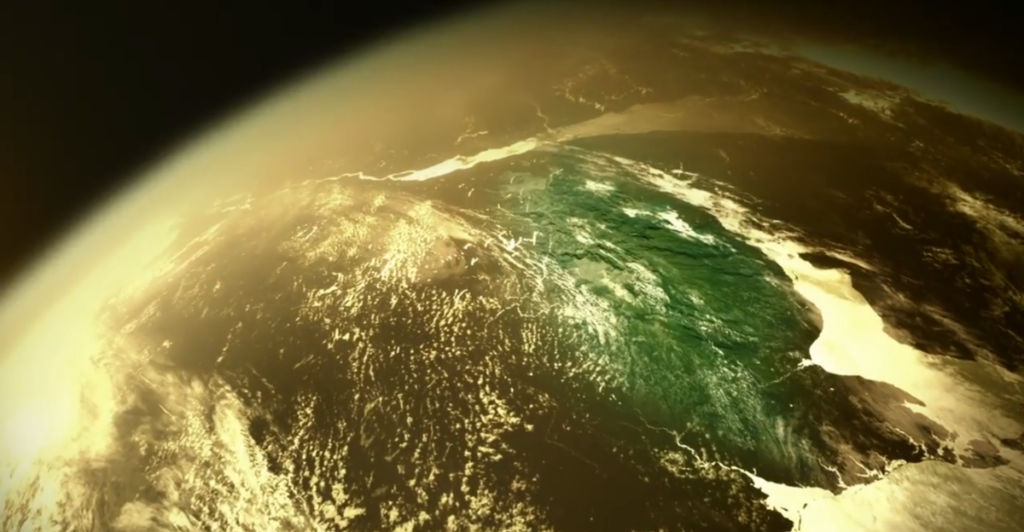
The Earth’s magnetic field, a dynamic force generated by the movement of molten iron in the outer core, serves as a protective shield against harmful solar and cosmic radiation. This magnetic field is not static; it experiences gradual shifts and, occasionally, complete reversals where the magnetic north and south poles swap places. Such reversals have occurred 171 times in the past 71 million years, with the last major reversal, known as the Brunhes–Matuyama reversal, happening approximately 780,000 years ago.
The Latest Findings
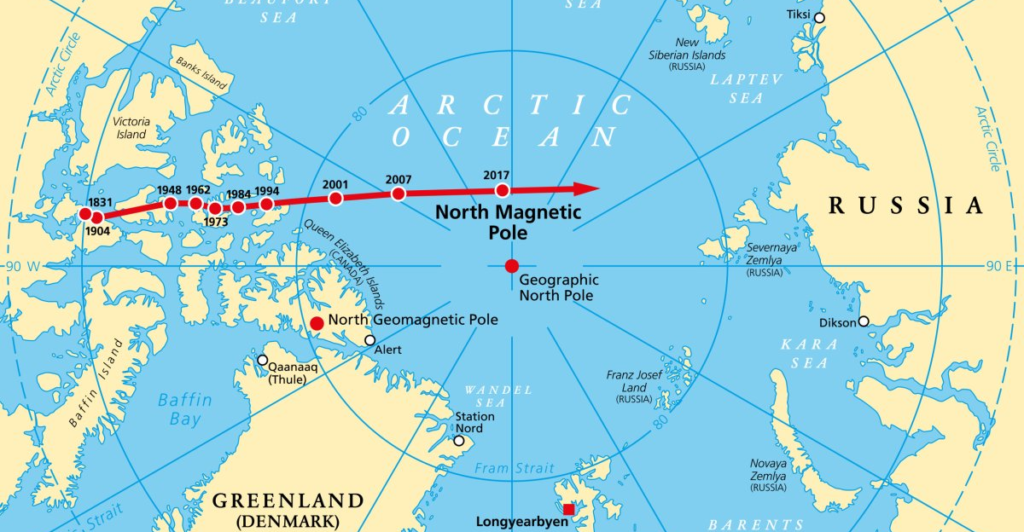
In recent decades, scientists have observed an accelerated movement of the magnetic North Pole. Historically, it moved at a pace of about 6 miles (10 kilometers) per year, but in the 2000s, this speed increased to approximately 34 miles (55 kilometers) per year. Over the past five years, the movement has decelerated to around 22 miles (35 kilometers) per year. This rapid shift has raised concerns about a potential geomagnetic reversal and its implications for our planet.
Understanding Geomagnetic Reversals
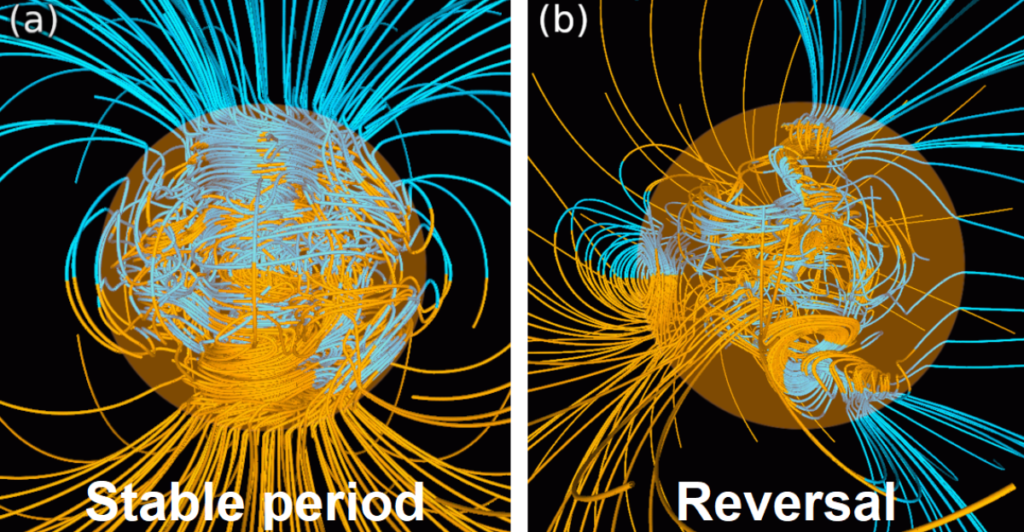
Geomagnetic reversals are natural phenomena where the Earth’s magnetic field flips, causing the magnetic north and south poles to exchange positions. These events are unpredictable and can take thousands of years to complete. During a reversal, the magnetic field weakens, potentially to as low as 10% of its full strength, before gradually rebuilding in the opposite orientation.
What Happens Next
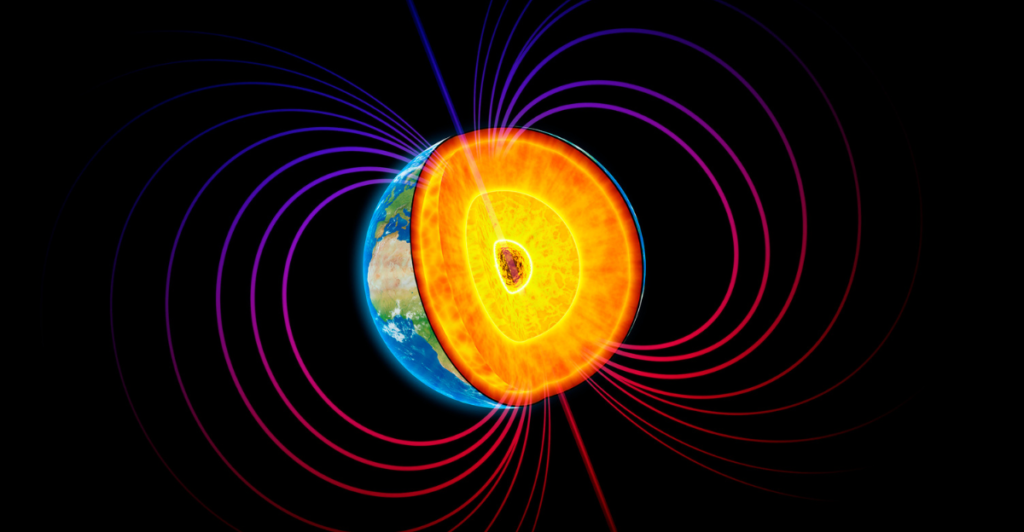
The causes of these reversals are not fully understood, but they are believed to be related to the complex dynamics of the Earth’s core. Computer simulations suggest that the churning movements of molten iron can lead to spontaneous disorganization of the magnetic field, resulting in a reversal. However, predicting the exact timing and consequences of such events remains a challenge for scientists.
Recent Movements of the Magnetic North Pole
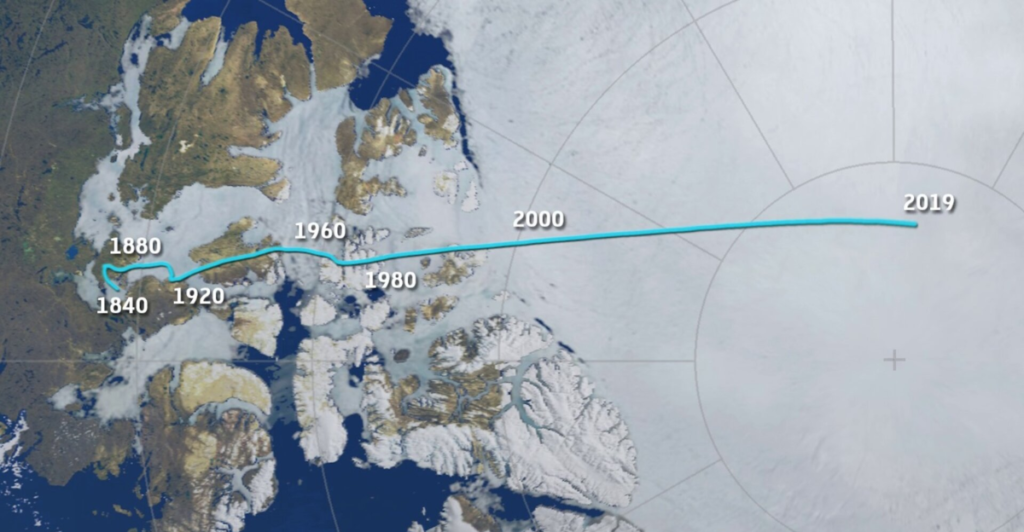
The magnetic North Pole has been drifting from its traditional location in northern Canada towards Russia. This movement has been unprecedented in speed and direction. Researchers from the University of Leeds propose that this shift may be due to a magnetic tug-of-war between two competing areas of magnetic force beneath Canada and Siberia, with the Siberian patch gaining strength.
Following The Poles
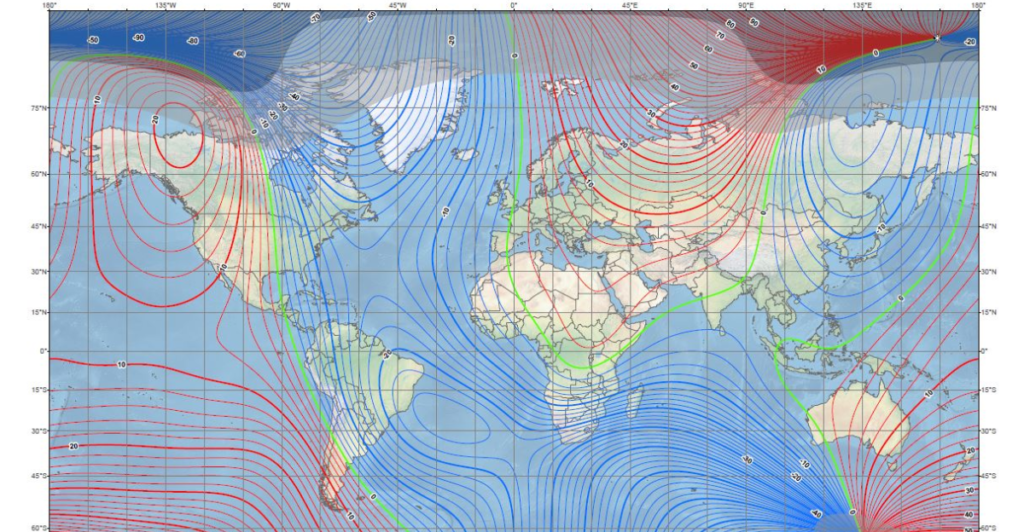
This rapid movement has necessitated more frequent updates to the World Magnetic Model (WMM), a vital tool for navigation systems used in smartphones, military operations, and GPS devices. The WMM is typically updated every five years, but the accelerated shift prompted an unscheduled update in 2019 to ensure navigational accuracy.
Implications for Navigation and Technology

A shifting magnetic field can have significant implications for navigation systems that rely on magnetic compasses. Aviation and maritime industries, in particular, depend on accurate magnetic data for course plotting. Even minor deviations can lead to navigational errors, emphasizing the importance of precise and up-to-date magnetic models.
Moreover, a weakened magnetic field during a reversal could expose satellites and other space-based technologies to increased levels of solar radiation. This heightened exposure can lead to malfunctions or damage to electronic components, potentially disrupting communication networks and GPS services.
Potential Biological Effects

Many animal species, including birds, turtles, and whales, utilize the Earth’s magnetic field for navigation during migration. A significant alteration or reversal of the magnetic field could disrupt these migratory patterns, leading to ecological consequences. However, evidence suggests that species have historically adapted to such changes, as geomagnetic reversals have occurred multiple times throughout Earth’s history without causing mass extinctions.
What Do We Do
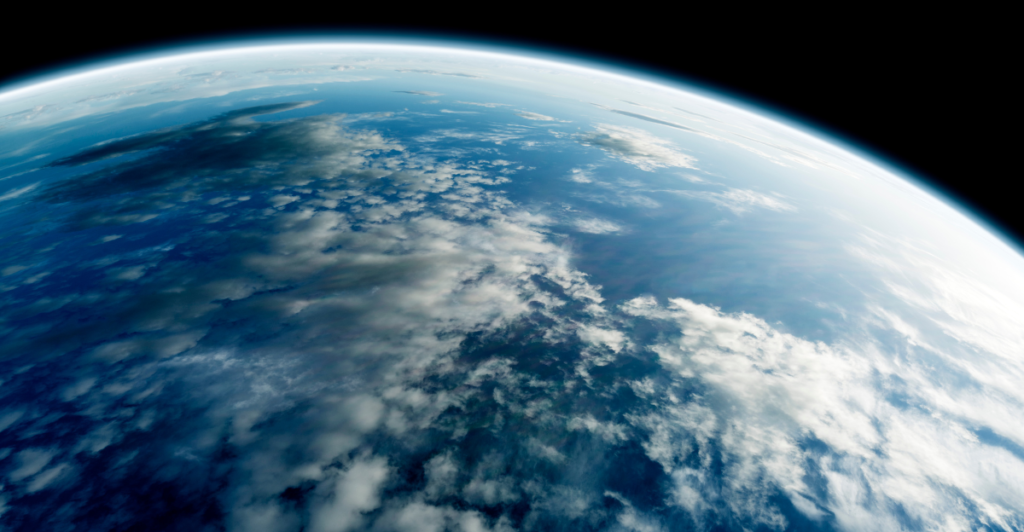
For humans, the primary concern would be the increased exposure to cosmic and solar radiation due to a weakened magnetic field. While the atmosphere would continue to provide substantial protection, there could be a slight uptick in radiation levels at the Earth’s surface, potentially increasing health risks such as cancer over prolonged periods.
Historical Context and Frequency
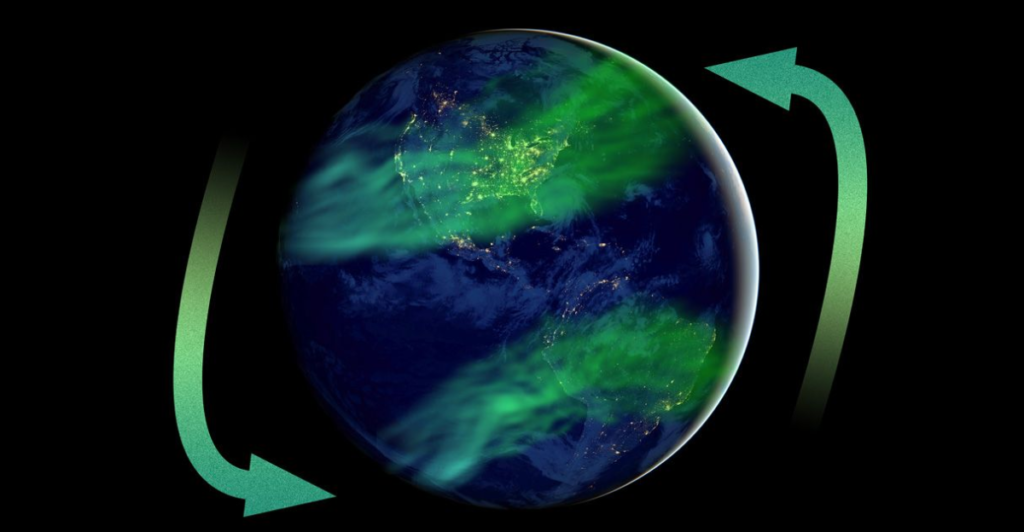
Geomagnetic reversals are irregular and unpredictable. On average, they occur every 300,000 years, but the intervals between reversals can vary significantly. The last full reversal occurred approximately 780,000 years ago, suggesting that we may be overdue for another.
In addition to full reversals, the Earth’s magnetic field experiences geomagnetic excursions—short-lived and incomplete reversals. These excursions can lead to temporary changes in the magnetic field’s intensity and orientation but do not result in a permanent flip of the poles.
Current Scientific Understanding and Monitoring
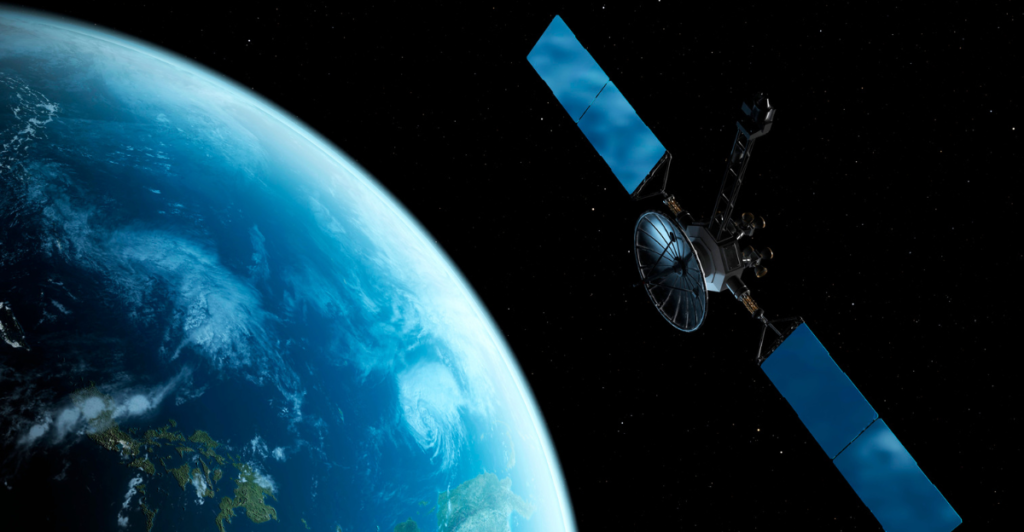
Advancements in satellite technology have enhanced our ability to monitor the Earth’s magnetic field with greater precision. Missions like the European Space Agency’s Swarm satellites provide high-resolution data on the magnetic field’s strength and direction, allowing scientists to detect anomalies and track changes in real-time. Despite these technological advancements, predicting the exact timing of a geomagnetic reversal remains elusive. The complex and chaotic nature of the geodynamo—the mechanism generating the Earth’s magnetic field—makes it challenging to forecast such events accurately.
The Big Shift

The Earth’s magnetic field is a dynamic and ever-changing force that plays a crucial role in protecting life on our planet. While the prospect of a geomagnetic reversal may seem alarming, it’s a natural part of Earth’s geological history. Humanity has not yet experienced a full reversal, and the potential impacts on modern technology and society are subjects of ongoing research.
The Ever Changing Globe
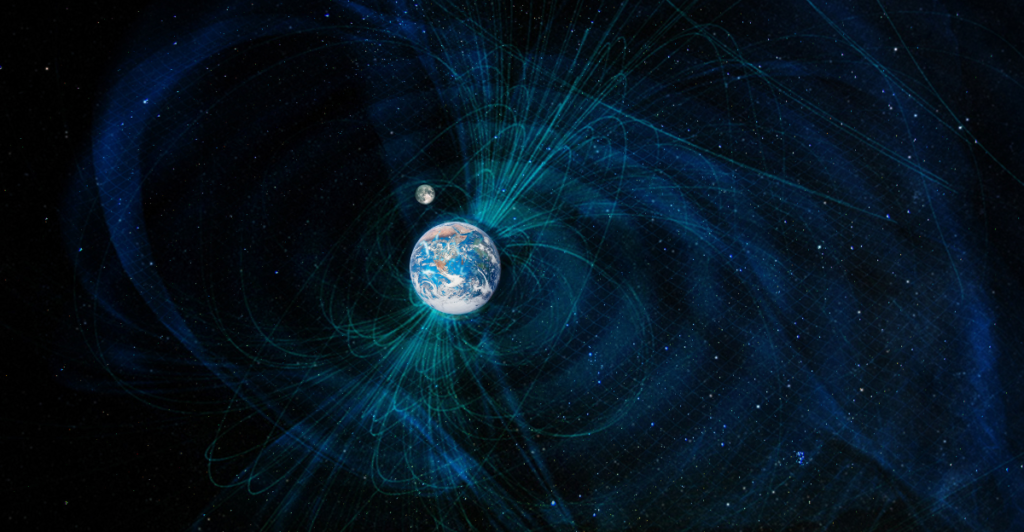
Continued monitoring and research are essential to deepen our understanding of geomagnetic phenomena. By studying past events and utilizing modern technology, scientists aim to unravel the complexities of the Earth’s magnetic field, ensuring that we are better prepared for any future changes that may arise.
Discover more of our trending stories and follow us to keep them appearing in your feed.

Colossal American Impact Crater Found—Three Times Bigger Than the Grand Canyon
Inside the Indian Ocean’s Gravity Hole—A Mysterious Weak Spot in Earth’s Pull
Scientists Uncover Secret Life Beneath Earth’s Harshest Desert
Deepest Hole On Earth Permanently Sealed After 2 Billion Year Old Discovery
Stay connected with us for more stories like this! Follow us to get the latest updates or hit the Follow button at the top of this article, and let us know what you think by leaving your feedback below. We’d love to hear from you!







